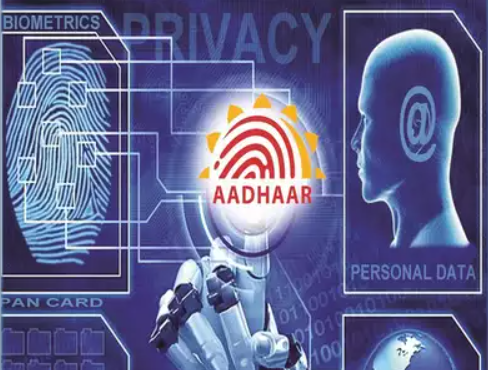Aadhar data can aid Forensics
Syllabus:
- GS 2: Government Policies and Interventions.
Why in the News?
There have been recent discussions about Aadhaar obtaining fingerprint data to identify unknown dead bodies, as there have been concerns about balancing the right to privacy and the right to life with the dignity of the deceased.
Introduction
- Aadhaar Act 2016 strictly limits access to biometric data, ensuring that privacy is protected.
- However, in cases involving unidentified deceased persons:
- obtaining fingerprints can aid investigation,
- maintain the dignity of the deceased, and provide closure to families
- This will help in balancing privacy and public interest as a matter of public policy in the requirements.
Dignity vs. Privacy of Citizens
- While identifying unknown bodies can be difficult task, it is important to uphold the right to privacy and human dignity.
- While the use of fingerprint data in assessment is invaluable, there is a delicate balance between respecting individual privacy and ensuring the dignity of the deceased
Death: Legitimate concerns about dignity
- The Supreme Court & the High Court of India have repeatedly emphasized the due process of the deceased like –
- Courts have condemned practices such as leaving a prisoner’s body hanging after execution, asserting that such practices are against dignity.
- In the case of migrant workers who have died abroad, courts have emphasized the need for dignified repatriation, and have shown a commitment to commanding dignity beyond death.
Unidentified Bodies and their backgrounds
- Most of the unidentified deaths belong to low-income groups.
- Many are daily wage laborers or migrant workers and often do not have strong family ties.
- Families may not report a missing person in cases where there is a lack of family ties or communication.
- These unidentified bodies often include those who are homeless or in temporary shelters, victims of unidentified accidents and individuals with mental illness.
Techniques in recognition of unknown bodies
- When an unidentified body is found, several steps are taken to try to identify it:
- Physical Examination: The body is examined for tattoos, scars, or deformities that can help identify them.
- Visual Evidence: Any objects or clues collected from the site.
- Surveillance: CCTV images are analyzed to identify movement patterns or events that may have resulted in death.
- Interaction with law enforcement: Shares information between local police and neighboring counties, and reviews missing persons reports.
- Announcements by Media: In some cases, details are publicly disclosed to promote local support.
The role of fingerprints in human recognition
- Fingerprints are important in identifying an unknown body, especially if the body is in a state of disintegration. Highlights include:
- Experts can remove tattoos on fingertips, even after death, by treating the skin with formaldehyde paste.
- These fingerprints are compared to existing criminal databases, and when other methods fail, they provide a key link.
- Identification of unidentified bodies is important to ensure respect for the deceased and to assist in investigations.
- In India, limitations on fingerprint data storage and privacy laws pose challenges to these efforts.
Challenges in fingerprint database accessibility
- Limited resources: Police fingerprint databases generally only include individuals with criminal records, limiting their usefulness in complex cases.
- Lack of digitization: Many states have yet to digitize fingerprint records, making the process of data entry slower and more accurately identifying individuals.
- Potential Aadhaar database: Obtaining Aadhaar fingerprints can go a long way in identifying dead bodies, help family members conduct funerals, and help in investigations, especially in cases of suspected crimes.
Legal restrictions and comparison with US. of arrangements
- Provisions of the Aadhaar Act: The Aadhaar Act strictly prohibits the sharing of basic biometric data (such as fingerprints) for any purpose including police investigation.
- S. Deceased Person Identification (DPI) Services: Unlike India, the U.S. doesn’t have access to the Deceased Person Identification (DPI) Services.
- Companies use advanced algorithms to match fingerprints to multiple databases, including those maintained by the Department of Homeland Security and Defense, to help pinpoint the deceased.
Need for limited access to base data in special cases
- Giving Case-by-case access: Allowing access to Aadhaar biometrics only to identify deceased persons, especially where FIRs (First Information Reports) are lodged, can help investigations without breaching privacy
- Judicial Oversight: Under Section 194 of the Bharatiya Nagarik Suraksha Sanhita, after the FIR is proved in case of unnatural death, the Judge of the jurisdiction instead of the Supreme Court can allow access to Aadhaar.
- This will simplify the process and reduce the number of High Court cases.
Constitutional and Humanitarian Theory
- Constitutional obligation: Recognition of the dead, especially of marginalized groups who receive little justice, is consistent with the constitutional right to life with dignity.
- Protecting dignity for all: Due recognition is based on the right to life, including the right to dignity, and ensures that even those without the means of life are treated with dignity in death after the.
Conclusion
Balancing privacy and the right to dignity is essential to identifying a deceased person. Allowing Aadhaar biometric data to be monitored in specific cases could increase scrutiny, bring closure to families, and support the constitutional right to life.
Source: The Hindu
Mains Practice Question:
Discuss the ethical and legal challenges of balancing the right to privacy and the right to dignity in using Aadhaar biometric data to identify deceased unidentified persons.




